ABC10 Investigation: PG&E knew old power line parts had ‘severe wear’ months before deadly Camp Fire
Evidence used to convict PG&E of the 2018 Camp Fire shows the company knew old parts needed replacing, but tried to show they could last longer.
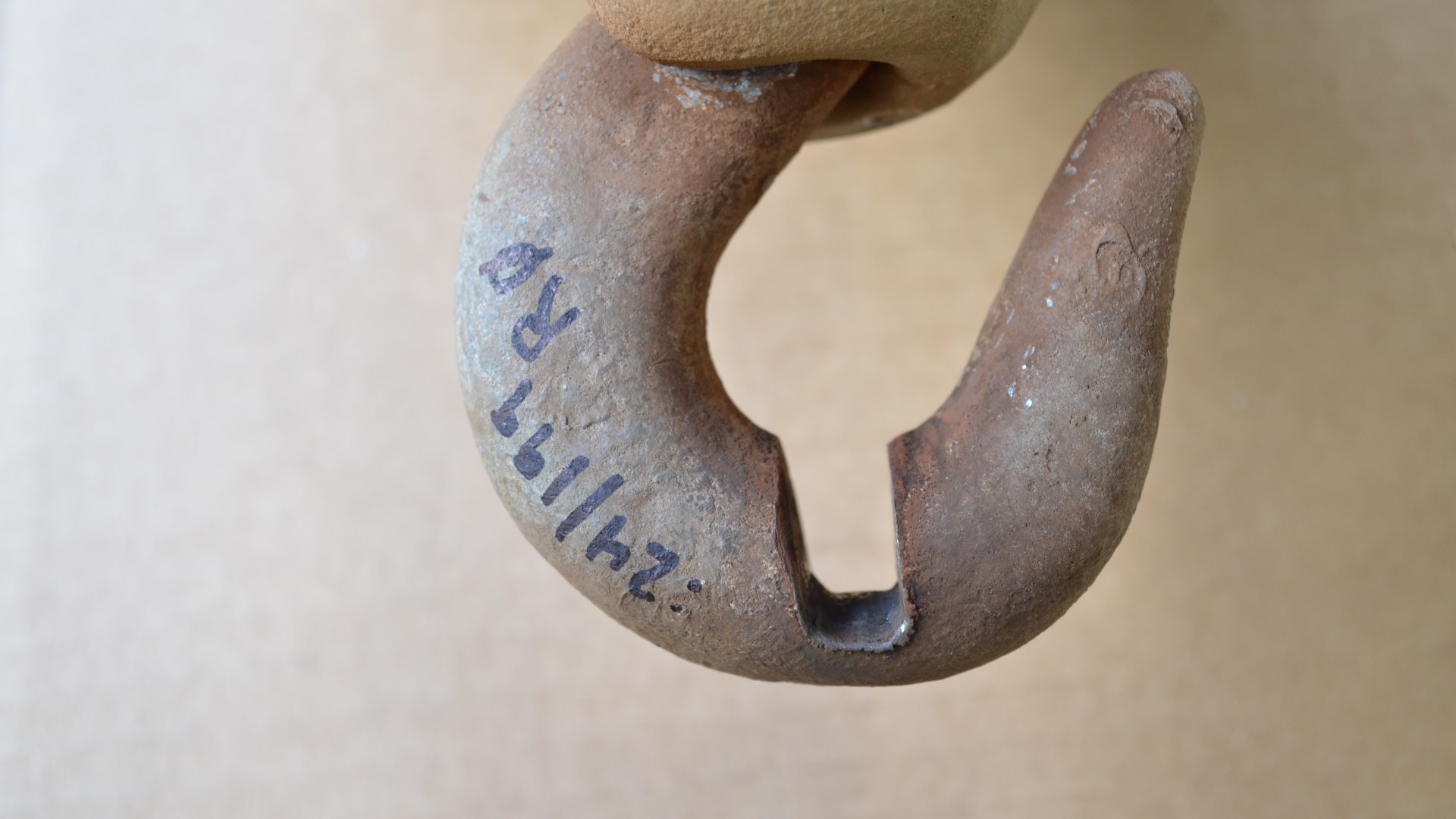
Evidence used to convict PG&E of sparking the deadliest wildfire in California history showed the company knew months beforehand that it had a problem with worn-out metal parts, but still used questionable science to attempt to calculate how many more years the parts could be left hanging.
Seven months before the 2018 Camp Fire destroyed the town of Paradise, PG&E crews discovered “severe wear” on steel parts holding up a 72-year-old power line in the East Bay Area.
An internal report from PG&E’s own materials lab neglected the risk of those parts cracking and concluded that they had as many as 28 years of “remaining life,” even though PG&E’s own maintenance policies said they did not. The lab report provides a window into what prosecutors call PG&E’s “run to failure” policy of delaying maintenance on power line parts until they break.
“It’s like running around with a loaded gun,” former state utilities commissioner Catherine Sandoval said after reviewing the report. “It can kill people.”

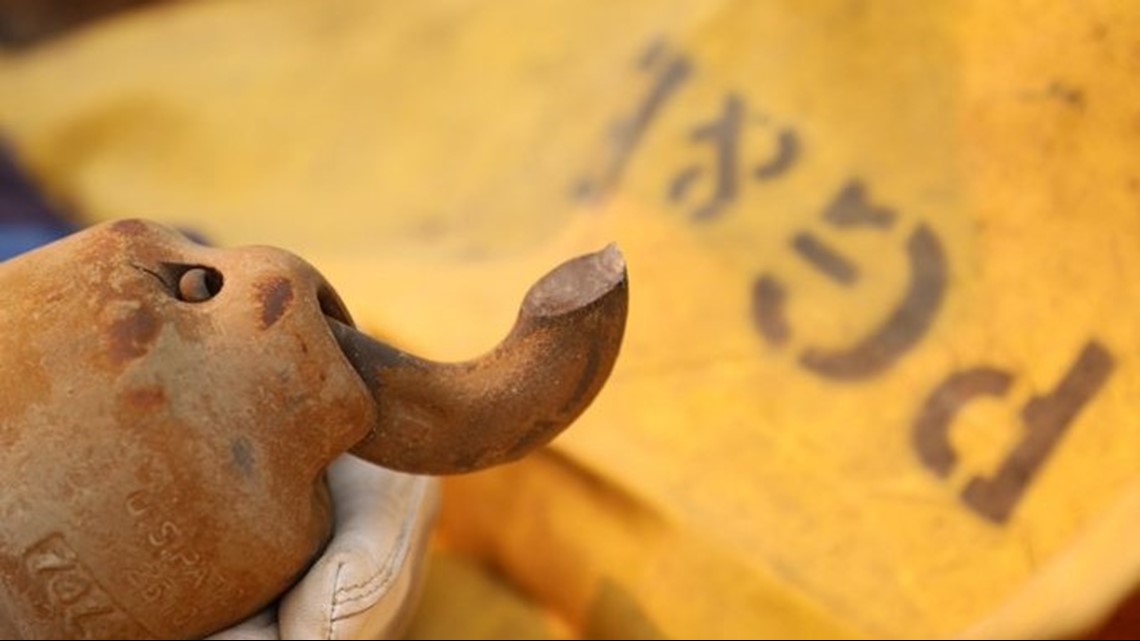
Much of the evidence shown to the Butte County Grand Jury that indicted PG&E has remained secret, but we do know the PG&E lab report was part of the evidence. ABC10 obtained that report and spoke with numerous experts in law and utilities, including a former PG&E metallurgist who worked in the lab that created the report, about the report's results.
“What PG&E did was violent. Whether you beat someone to death or you cause them to die in a fire, you've caused a violent death,” Phillip Binstock said. His 87-year-old father Julian was found dead in his bathtub after the Camp Fire burned his retirement home. “The employees of PG&E knew. They knew. They ignored it. As a consequence people died.”
PG&E pleaded guilty to 84 felony counts of manslaughter for sparking the 2018 Camp Fire and another felony for sparking the Camp Fire through its own criminal negligence. The electric company was already on probation for six federal felonies after the deadly San Bruno gas explosion, a case which also involved poor safety work and killed eight people in 2010.
The company has faced relatively few consequences for these crimes. In fact, PG&E has successfully lobbied the government to change laws and waive fines for its deadly safety violations as Gov. Gavin Newsom (along with most members of California's legislature and congressional delegation) continued to accept political donations from the company after it became a convicted felon.
PG&E is under yet another homicide investigation for the four deaths in the September 2020 Zogg Fire amid questions about whether the company properly inspected and cut trees that threatened power lines as required by law and its use of "junk science" that failed to identify its power line as needing to be shut off.
Though these deadly disasters differ in whether they involve gas pipelines, old metal parts, or unmanaged trees, Sandoval said they all have one thing in common: poor management of life-and-death information by PG&E.
“This is the world that PG&E created," Sandoval said. "The world that PG&E created reflects their criminal thinking and is criminally reckless,” Sandoval said. "And we get to live in fear in it."
NOTE: This investigation was produced by ABC10's FIRE - POWER - MONEY reporting project. If you have a tip that could help reveal more about California's crisis with utilities and wildfires, please contact investigative reporter Brandon Rittiman at brittiman@abc10.com.
THE 'RUN TO FAILURE' POLICY
The severely worn parts found in the Bay Area showed the same kind of wear that caused a power line to fall in Butte County, sparking the 2018 Camp Fire.
The Camp Fire was sparked by PG&E’s Caribou-Palermo transmission line, which was even older than the line was originally identified as in PG&E’s lab report. Built in 1921, the line was 97 years old when it failed.


PG&E pleaded guilty to the felony manslaughter of 84 people and to starting the fire through recklessly negligent maintenance of its power line, but denied to a federal judge that it relied on a “run to failure” strategy to maintain its power line.
“PG&E denies, denies, denies,” lead Camp Fire prosecutor Marc Noel said. “But as far as the facts that we could see, that was the policy.”
“Run to failure was the policy that I knew about,” former PG&E engineer Nick Bantz said. “That was talked about as company policy.”
Prosecutors also found that PG&E’s practice of running parts to failure coincided with cuts to inspection policies and budgets.
“As your equipment is getting older you're spending less and less time looking at it,” Noel said. “They had lit the match on this bomb years ago and the fuse was just very quickly burning down. It wasn't if it's going to go... it's when it's going to go.”
'REMAINING LIFE’ FOR USED-UP PARTS
The 2018 PG&E lab report obtained by ABC10 studied six worn-out hanger plates removed from towers on PG&E’s Parkway-Moraga transmission line, which is located near the Caldecott Tunnel in the East Bay area.
These metal parts showed severe "keyholing" on the holes from which C-hooks hung to hold up power lines, similar to wear found on the power line that sparked the Camp Fire. The lab report’s executive summary claimed “the remaining life of the plates was conservatively calculated to be between 28 years and 25 years.”

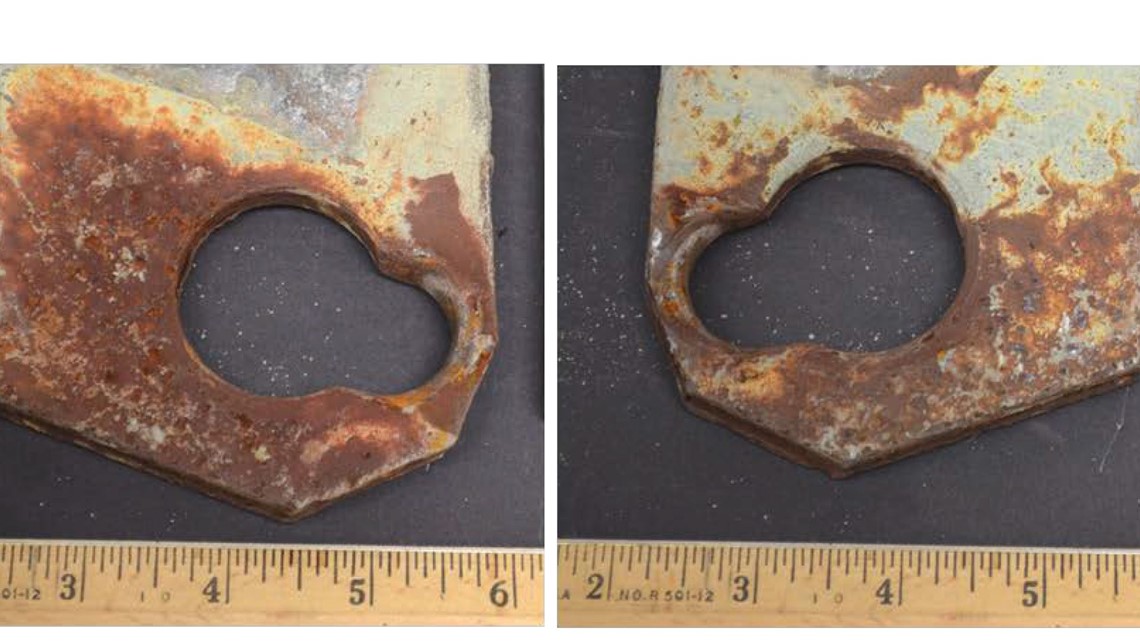
“It's trash, in my opinion, to even have stated it,” former PG&E metallurgist Nick Bantz said after reviewing the remaining life figure in the lab report. “There is no remaining life to that.”
The report was authored by Bantz’s former colleague Peter Martin, who left PG&E for a research job at the Rochester Institute of Technology. Martin did not return emails or calls seeking comment.
In his opinion as a metallurgist, Bantz said the parts in Martin’s lab report had already been at risk of cracking for years.
“This could have fell any time in the last decade,” Bantz said of PG&E’s Parkway-Moraga hanger plates.
Cracking is what caused the hook to break and spark the Camp Fire.
Martin’s report calculated years of “remaining life” based on the assumption that the parts would never crack, but fail by wearing completely through based on the rate they had been wearing over the previous 72 years.
The fine print of Martin’s report explains that its conclusion “neglects the possibility that the plates develop cracking (from fretting or fatigue.)”
WHAT GOOD IS A ‘BOGUS’ REMAINING LIFE NUMBER?
This raises an essential question that was never answered in the criminal case to which PG&E pleaded guilty: why did PG&E employees try to calculate years of remaining life for parts that had none?
“It was to give a number, to give somebody a number for something because they were wanting a number,” Bantz said. “There’s the number, but it’s bogus.”
PG&E’s Applied Technology Services lab, Bantz explained, relied on other divisions of PG&E for funding by ordering “billable hours” of work for lab scientists to do.

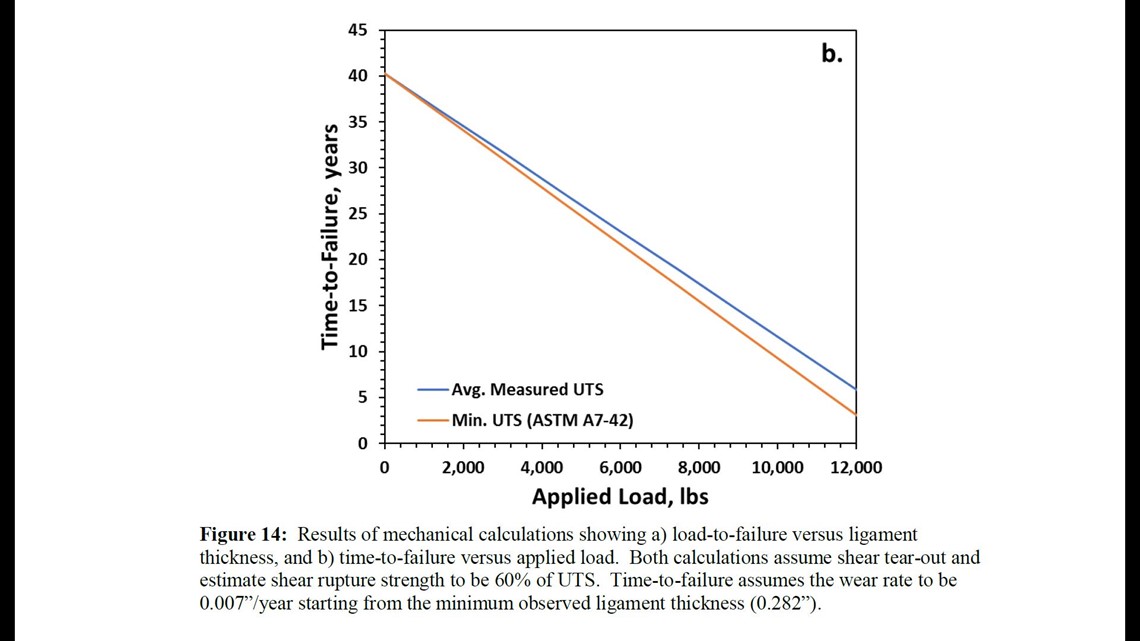
Engineers in the materials lab were under pressure to “sell” their services to supervisors around the company, Bantz said. When PG&E’s power grid managers wanted to see years of remaining life, that’s what the lab gave them.
“That's what [PG&E’s Asset Strategy manager] was wanting at the time,” Bantz said. “My supervisor was wanting to, you know, please him to be able to get that contract or get those funds.”
Sandoval described PG&E’s method of requiring scientists to pursue work around PG&E’s 100,000-mile network of power lines as further evidence of the company’s criminal thinking.
“PG&E set up a system that is again criminally reckless,” Sandoval said. “It’s completely backwards. You need to do some proactive analysis, and that is not the responsibility of some guy to convince another boss to send them work. It is PG&E’s responsibility as the corporation that owns those assets to maintain those assets.”
Bantz may have understood that his lab was under pressure to deliver a number, but he doesn’t know why the people managing PG&E’s power lines wanted such a number in the first place.
“It's not a number you can make, really, I'd say any sort of decision on,” Bantz said.
In an emailed list of direct questions about the lab report, ABC10 asked PG&E to explain why its lab calculated the remaining life figure. The company didn’t provide an answer.
PARTS WORE TO REPLACEMENT LEVEL IN 1984
The fact that the hanger plates had no remaining useful life is not merely a former PG&E metallurgist’s scientific opinion. It was official company policy.
PG&E’s 85-page manual for maintaining transmission lines, a document PG&E employees called “the bible,” said steel parts need to be repaired “immediately” if they’re worn at least halfway through.
Parts that are worn at least 30 percent are required to be corrected within 12 months.


The most worn-out hanger plate pulled off of the high-tension Parkway-Moraga line was worn 62 percent through. According to the rate of wear determined in PG&E’s own lab report (0.007 inches per year,) that plate would have reached 30 percent wear in 1984 and worn more than halfway through by 2005.
Fifty percent wear is considered “Priority A” according to PG&E’s Electric Transmission Preventative Maintenance Manual, which it defines as a potential hazard that’s “urgent and requires immediate response and continued action until the condition is repaired.”

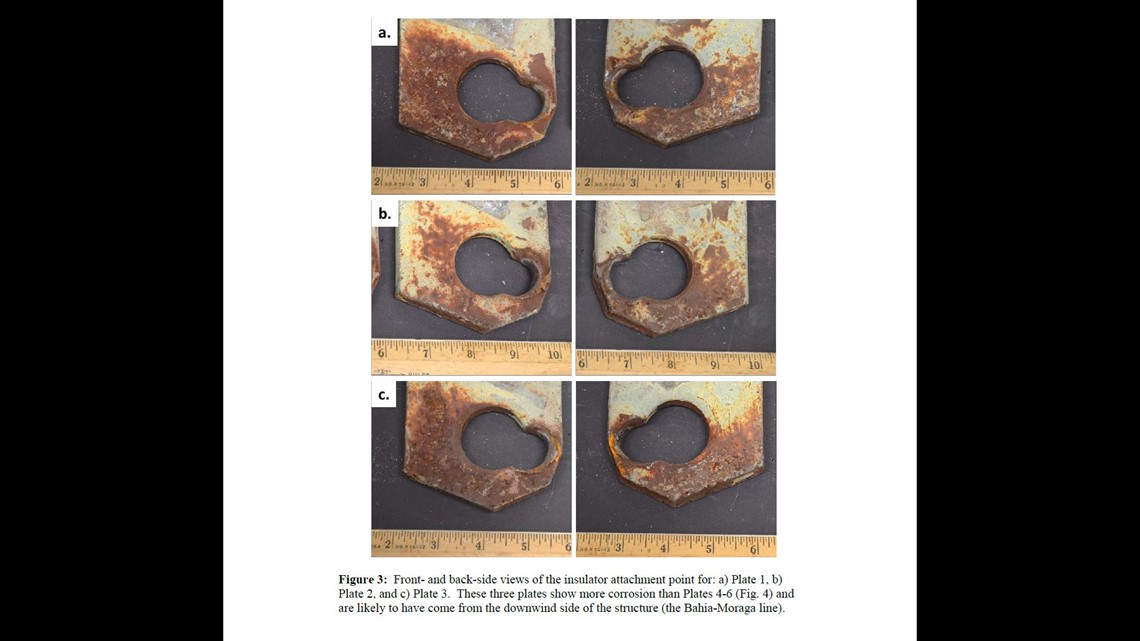
The Parkway-Moraga report is evidence of someone doing exactly that.
David Hernandez, a transmission line supervisor in the Bay Area, had the worn hanger plates replaced and sent them to PG&E’s lab for analysis.
The problem is that the replacement happened decades after the parts wore down to substandard conditions.
PG&E told a federal judge that it found the Parkway-Moraga parts during “routine” maintenance, but Camp Fire prosecutors say the wear was only discovered because crews decided to do extra work while the line was switched off due to repairs from a mudslide.
While the lab report shines new light on what PG&E knew about old towers in the months leading up to the Camp Fire, the wear patterns of the hooks and eyes has been a known risk to the company since at least 1987.
Sandoval suggests PG&E ought to have been taking the risk more seriously all along.
“Metallurgical wear is not a new thing,” Sandoval said. “The Romans were aware of it. Medieval knights were aware of it.”
WHAT WAS DONE WITH THE INFORMATION?
After PG&E crews discovered how bad the wear had become, PG&E’s internal 2018 lab report concluded that “additional inspections should be conducted at selected locations” on PG&E’s power grid to look for similar problems.
PG&E did not answer ABC10's questions asking what actions the company took in response to finding the badly worn parts in the report, including whether it alerted its government regulators of the wear.
“They knew that there were problems with metal fatigue and wind sway,” Sandoval said. “What they’re not entitled to do is just get a report like this, bury it, and do nothing.”
In the months before the Camp Fire, prosecutors say PG&E did order its employees to begin climbing all of the towers on the Caribou-Palermo line.
The Caribou-Palermo work order for climbing inspections was issued June 26, just six days after PG&E’s lab finished the Parkway-Moraga report. When we asked PG&E whether the work order and the lab report were related or mere coincidence, the company did not answer.
The PG&E lab report states that it was meant to help size up “the integrity of similar components in other locations.” PG&E inspectors did not make it up tower 27/222 — the one holding the hook that broke — in time to prevent the Camp Fire.
It’s not clear how thorough the inspections were on the towers PG&E did climb.
After the Camp Fire, PG&E tagged 13 towers on the line as Priority A “where similar visible wear on the working eyes of the hanger plate was detected,” according to the CPUC’s investigation.
COMPANY-FUNDED LAWSUIT KEEPS MORE DETAILS SECRET
All four of the PG&E employees named in the 2018 lab report were also named in the criminal investigation presented to the Butte County grand jury that indicted the company.
Those four are also among the 22 current and former employees who filed a lawsuit seeking to black their names from the grand jury transcripts. ABC10 was able to obtain all 22 names by copying the original PDF file provided to the court and pasting the information into Microsoft Word.
In addition to Peter Martin, who authored the lab report, his report was co-signed by fellow PG&E materials engineer Sireesha Mopati. David Henandez is listed as receiving a copy of the report studying the parts he submitted to the lab, along with Jeff Lockwood, a specialist in PG&E’s transmission asset strategy unit.

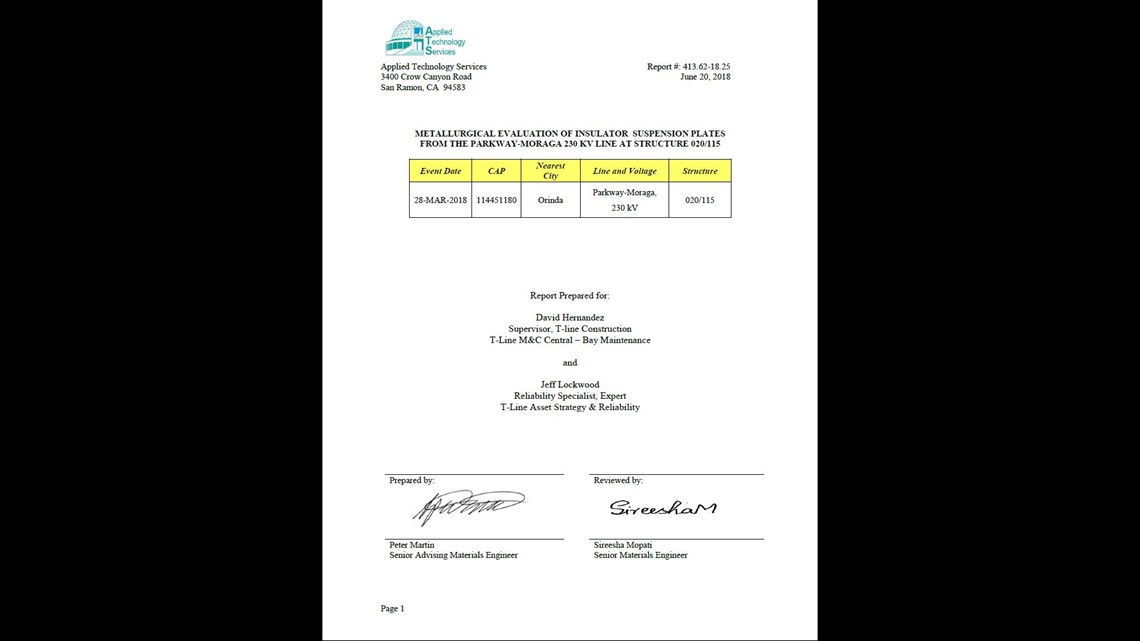
ABC10's attempted to interview Hernandzez. Mopati, and Lockwood — by both reach out to PG&E and to their personal contact — however, none returned calls.
These four are only a handful of the roughly 200 PG&E employees whose names appear in the grand jury transcripts for the Camp Fire case. Under California law, those transcripts were supposed to be released to the public within 10 days of PG&E’s conviction last June. They’ve been kept a secret, however, for the past seven months, held up by the lawsuit in California’s third district Court of Appeal in Sacramento.
The Wall Street Journal joined ABC10's opposition of the lawsuit, which seeks to black out PG&E employee names and “information such as job titles and any related information,” which prosecutors warn could make the transcript “unintelligible” to readers.
PG&E admitted to ABC10 that it is funding the lawsuit as a “wildfire related” expense.
“I want to know who’s responsible for killing my father. And I have the right to know,” Phil Binstock said. “This is a crime. They pled guilty. This is not the place for [PG&E] to go hiding more information.”
POOR RECORDKEEPING FORCED LAB TO DO GUESSWORK
PG&E’s lab report provided a rare glimpse into just how much guesswork the company's scientists had to do. For starters, no one kept track of which exact line and tower the six parts came from.
Some of them came from the Parkway-Moraga line and others came from the Bahia-Moraga line further downwind.
“No supporting documentation was provided to associate the individual plates with either line,” Martin’s report noted, so he numbered them 1-6 and guessed which one came from which line.
Martin also had to guess which design drawing PG&E’s part was probably built from, disclosing that PG&E’s transmission line engineers “were unable to identify original drawings specific to this component.”
But he had to also guess an even more critical fact: the age. Martin couldn’t find any data or records in PG&E’s system to tell him for sure how long the parts had been hanging there.
“The suspension plates were probably installed in 1946,” Martin concluded.

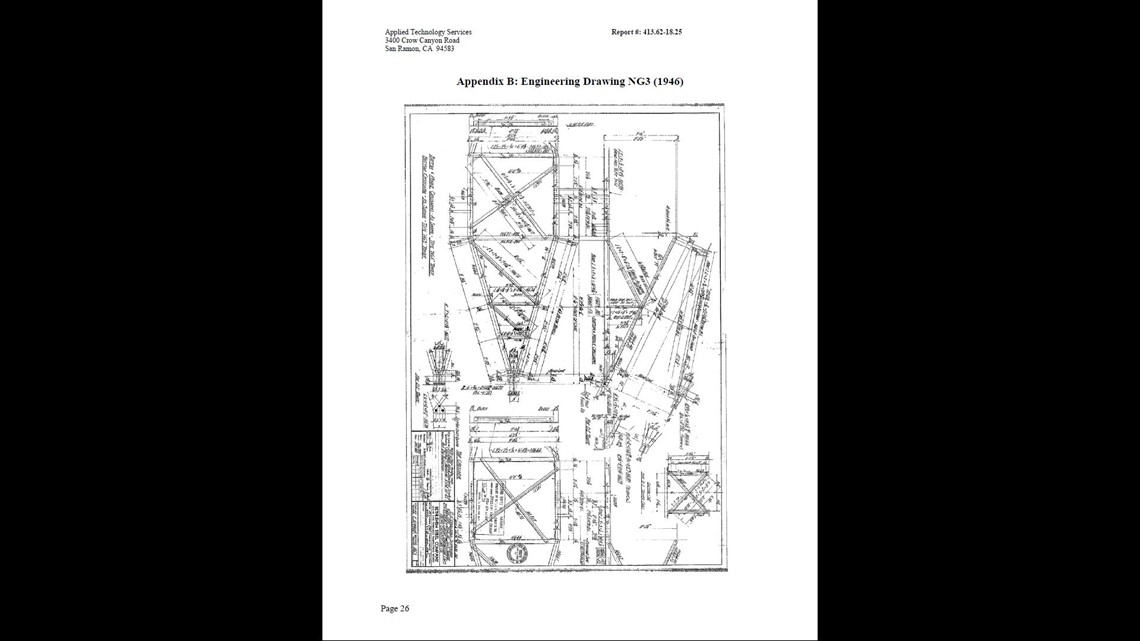
He based all of his calculations on the assumption that the parts had been there for 72 years. The fact that he had to guess is troubling because if the parts were newer, it would mean the wear was happening at a faster rate than Martin calculated.
This also helps to show a pattern of poor recordkeeping. FBI metallurgists who studied the hook that cracked and caused the Camp Fire to be “consistent with” having hung for all 97 years that the Caribou-Palermo line had existed.
But PG&E had no record to show whether that was true. The company told a federal judge it “does not have sufficient information to admit or deny” whether the parts on that line were original.
‘NO RECORD OF ANY CLIMBING INSPECTIONS’
PG&E did have some records on inspections in recent decades, which showed company crews performed their last ground-based inspection of the tower where the Camp Fire started in 2014; four years before sparking the fire.
Prosecutors say PG&E’s inspectors testified that they wouldn’t have been able to see the wear to the hooks and eyes without climbing up the towers. PG&E had “no record of any climbing inspection” whatsoever on the tower, prosecutors say.

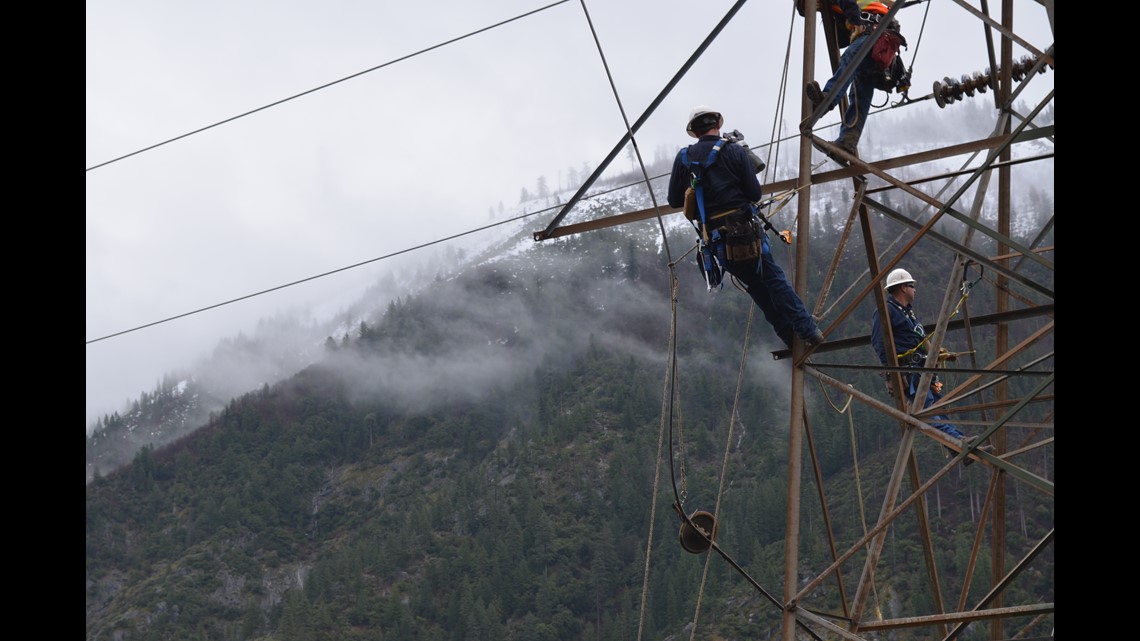
A public report summarizing the Butte County District Attorney’s case chronicles how PG&E cut back its climbing inspection policy from a regular rotation that required towers to be climbed after a set number of years to a policy that only required climbing based on “triggers” to send crews up for a closer look.
PG&E said that it still plans to conduct climbing inspections only on “an as-needed basis” for most of its transmission lines, but added that it plans to do what it calls “enhanced” inspections in state-defined areas of fire danger.
The “enhanced” inspections can be done by drone, helicopter, or climbing under PG&E policies.
“In the highest fire-threat areas, (Tier 3) we now conduct inspections of every line mile every year,” PG&E spokesperson Lynsey Paulo wrote in an email. “In Tier 2 areas, we inspect all lines on a three year rolling basis.”
After cutting the number of inspections required by company policy, Camp Fire prosecutors say PG&E also squeezed inspection budgets, tracking which power line supervisors went over or under budget on monthly inspection costs in red and green color-coded lists and then tying their bonuses to whether they kept costs low.
PG&E admitted this to a federal judge and said it has since stopped the color-coded reports and bonus adjustments based on them.
JUDGE EYES NEW RECORDKEEPING RULES IN PROBATION
Poor management of information by PG&E is under scrutiny by US District Judge WIlliam Alsup, who is considering imposing new terms of probation on the company in the wake of the September 2020 Zogg Fire. The company is on federal probation until at least January 2022 for the San Bruno gas explosion.
The Zogg Fire killed four people near the community of Igo in the hills above Redding, including an eight-year-old girl and her mother.


Shasta County prosecutors are exploring homicide charges against PG&E, suspecting the company of failing to properly cut trees that threatened power lines as required by law and of failing to switch off power to the line that sparked it.
PG&E admitted to Alsup that its crews may have marked the tree as needing to be removed, but then never followed up to remove it.
In a recent hearing on the issue, Alsup called PG&E a “terror: T-E-R-R-O-R to the people of the state of California.”
PG&E ignored nearly all of ABC10’s specific questions about this story, but did acknowledge the destruction of its Camp Fire crimes.
“The Camp Fire was a terrible tragedy that none of our 23,000 employees will ever forget,” PG&E spokesperson Lynsey Paulo wrote in an email.
The statement went on to raise the issue of heightened danger due to a changing climate, saying “high temperatures, extreme dryness and record-high winds have increased fire risk across the areas that we serve.”
Alsup said he's is out of patience with answers like that.
“Please don’t blame climate change,” Judge Alsup scolded PG&E’s lawyers in a hearing this month, noting that the risk of climate change has been known for many decades. “Climate change doesn’t start the wildfire. PG&E starts the wildfire.”
‘EVIL LITTLE PEOPLE’
Despite this, PG&E had repeatedly resisted and tried to soften Alsup's plans to make the company keep better track of safety information.
"[The evidence shows] they don’t know what they have," Sandoval said. "They are not taking seriously their responsibility."
Sandoval is representing PG&E customers for free in the company’s probation hearings and arguing for the court to impose rules that would keep the company from treating its safety records, in her words, “like used dental floss.”
She said she's alarmed at the resistance PG&E has shown to making changes to its recordkeeping.
“When you've got a person who's an addict they’ve got to admit first that they have a problem,” Sandoval said of PG&E’s track record of putting profits above safety. “PG&E needs to first admit that it has a problem. Instead their instinct is to say 'no, no we got it.’”

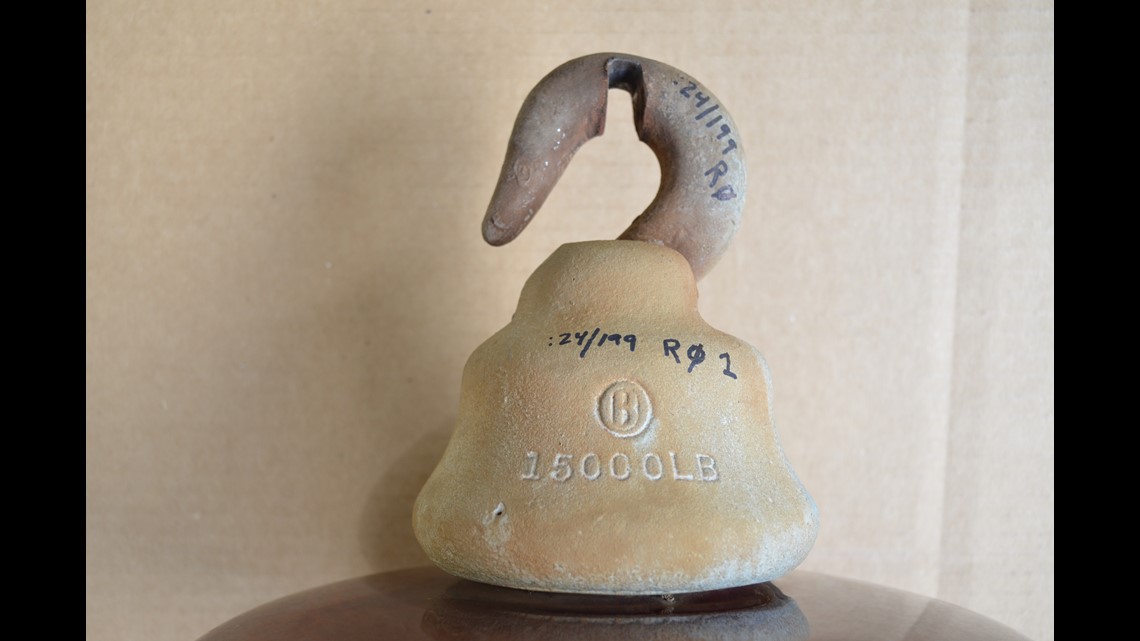
PG&E did not make its new CEO Patricia Poppe available when we requested an interview.
Victims of PG&E’s wildfires don’t want to see more California families lose their lives and homes in preventable fires.
In the still of night, Phil Binstock has spent many waking hours since the Camp Fire wondering how painful his father’s death was. His first check from PG&E’s bankruptcy settlement with victims finally arrived this month: $25,000 dollars, minus attorney’s fees.
Like the rest of PG&E’s fire victims, he has no idea how much he’ll be paid in full because the company hatched an unusual plan to pay victims in shares of PG&E stock to be sold by a trust fund. PG&E’s future risk could reduce the stock value, which would reduce the amount of money they receive.


Whatever he’ll be paid, Binstock told us he’d much rather see PG&E’s upper management in prison.
“If I had a sense that they were even trying to fix anything in a really meaningful way, maybe I wouldn't feel so harshly towards them,” Binstock said. “Evil little people.”
PG&E Response to Questions
The 2018 PG&E lab report is embedded below. ABC10 reached out to PG&E's with a list of 10 questions, however, the company only answered one question. Here's is that question and answer in full.
- Is PG&E now subjecting transmission towers to regularly-scheduled climbing inspections, as opposed to conducting them based on triggers? If so, how often?
PG&E spokesperson Lynsey Paulo's response:
"The Camp Fire was a terrible tragedy that none of our 23,000 employees will ever forget. We continue to mourn for the lives lost, for those who were injured, and for communities that were damaged or destroyed. The most important way we can honor the victims and all that was lost is by continuing the hard and important work of further reducing risk across our energy system.
"Our teams work every day on the safety of our electric system to reduce wildfire risks. High temperatures, extreme dryness and record-high winds have increased fire risk across the areas that we serve. Roughly 50% of PG&E’s service area is in High Fire-Threat District areas as designated by the California Public Utilities Commission (CPUC). In the highest fire-threat areas, (Tier 3) we now conduct inspections of every line mile every year. In Tier 2 areas, we inspect all lines on a three year rolling basis. In 2020, we inspected more than 15,000 miles of electric lines in Tier 3 and Tier 2 areas.
"Last Friday, we filed our 2021 Wildfire Mitigation Plan with the CPUC. Our plan details our new risk modeling, as well as our ongoing work to reduce wildfire risk. The Plan must be reviewed and approved by the CPUC. For more information on our Wildfire Mitigation Plan, please see link here."
(Editor's note: An earlier version of this report incorrectly described PG&E's Parkway-Moraga report as being kept "secret" along with the rest of the criminal evidence from the Camp Fire case. While the body of evidence shown to the grand jury is secret, a redacted version of PG&E's report had been submitted to U.S. District Court among documents responding to questions from a judge. Images of the report appeared in a news report prior to the company's criminal conviction on Bay Area television station KNTV.)
Watch more:
California wildfires: How PG&E continues to avoid accountability | FIRE – POWER – MONEY special


